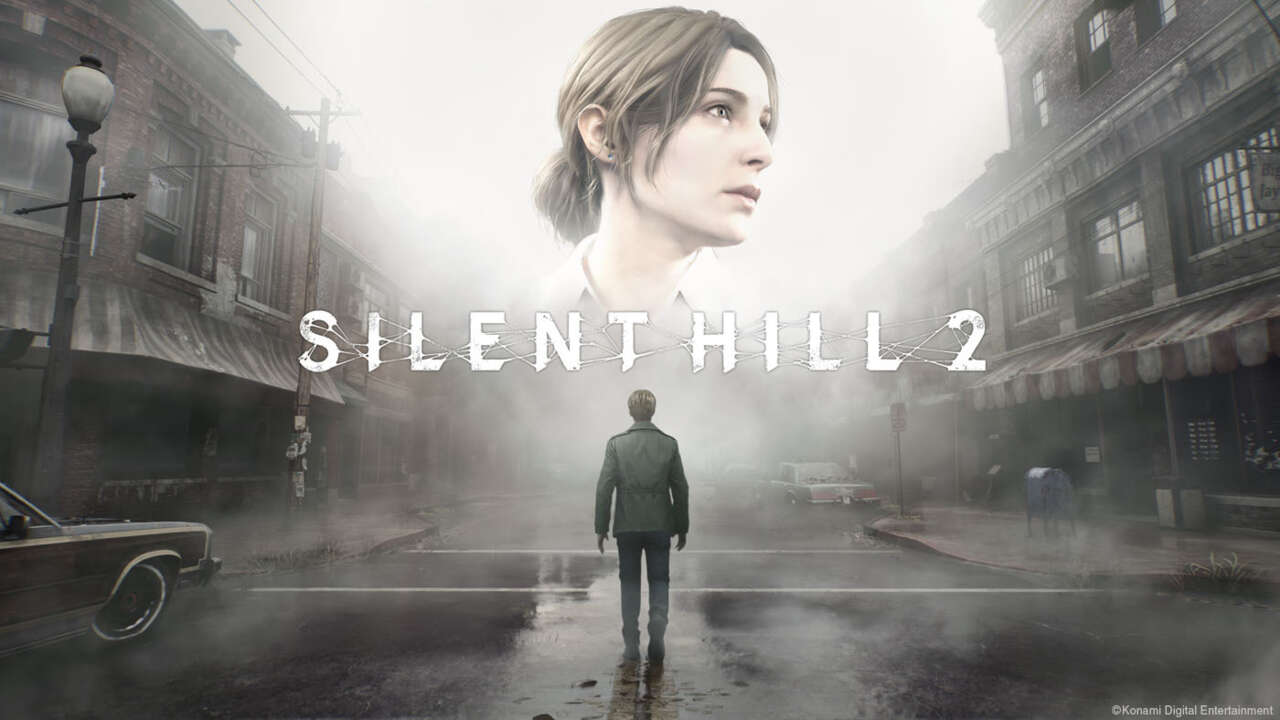Despite several recent successes in remaking classic horror games, there’s been one project that seemed to be an enormously daunting, if not impossible, task: Silent Hill 2. For some, the game represents the holy grail of the survival-horror genre, with its uniquely dreamlike mood, haunting monsters draped in metaphor, and an oppressive atmosphere as thick as the titular town’s signature fog. Depending on who you ask, Bloober Team has either been auditioning for the reins to this series or liberally cribbing from it for years with games like Layers of Fear and The Medium. Now, in cooperation with Konami, all that groundwork has led to the team’s remake of Silent Hill 2, and the end result is a meticulous, loving, and stunning recreation of one of horror’s most significant efforts.
Silent Hill 2 stars James Sunderland, a man who arrives in the dreary town of Silent Hill in search of his wife, Mary, who has written him a letter begging to see him again despite allegedly dying three years ago. For James and the player alike, this classic horror story setup of an amnesiac surrounded by ghouls soon peels away like dead skin, revealing a series of surreal nightmares that blend moods and aesthetics in ways that purposely confound and unsettle. This ultimately gives life to something that may feel familiar to players, if only because the original Silent Hill 2 has been such a prominent genre touchstone for more than two decades.
The town and its inhabitants behave like the setting and characters of a dream one may half-recall upon waking. Moving through Silent Hill often defies basic concepts of what a town even is, evidenced by the enormous fences cloaked in dirty sheets that abruptly end some avenues. They look as though they exist to quarantine the town from the outside world, but the thick fog envelops so much of the space that it also immediately and ceaselessly feels like no other place possibly exists.
It’s as though Silent Hill is not a place on a map, but a place in one’s mind, and the game expertly toys with its lack of clarity in this regard. It ignores Euclidean geometry in favor of decrepit hospitals, labyrinthine apartments, and archaic prisons that, once breached, reveal themselves to be impossibly vast, dark, liminal spaces. James is not welcome there, and as much as any sensible person would turn around and head for the exit, a vaguely felt hand of fate pulls him deeper into the town at every turn.
Conversations between James and other travelers lost in the fog of the town unfold with a similar air of unreality. The virtual ghost town is home to a sparse few, each of whom seems to have been called to the locale subconsciously, much like James. People say things that couldn’t possibly make sense to someone like him, a stranger who has only just arrived, or the player, who is right there with him. But when James seems to accept their words at face value, it has the intended effect of estranging you as the player. It’s like inverted dramatic irony, where the characters seem to know something you don’t, but they’re not hiding it from you maliciously, either.
You’re not meant to understand it much, at least not always, and certainly not right away. Early conversations reveal this strange quality, and before you can determine if you’re missing something, the game has pulled you too far into its central mystery to merit an early exit, much like James’s own experience.
All of these phantasmagorical qualities of the town are made even more special by an incredible soundtrack from longtime series composer Akira Yamaoka, who returned for this project along with a few others from the original game. Yamaoka’s score is unforgettable, even as it’s often deliberately at odds with the events you’re seeing on the screen. Some compositions are touching and sweet, but become corrupted and creepy when they’re used during darker moments, like when a seemingly orphaned young girl claims to have been friends with Mary, and the growing hostility of her accusations is wonderfully juxtaposed against the tranquility of the music.
In the remake, Yamaoka has rearranged several of the original game’s songs, which are as mesmerizing as they ever were. Having heard the original songs so many times, I noticed some of the differences immediately, but I never found the new versions lacking. There’s an ever-present danger in Silent Hill, so when that’s upended with legitimately beautiful music, it only further drives home the town’s anomalous nature. Like James, it leaves you struggling to grasp your feelings and questioning everything you thought you knew. Feeling haunted shouldn’t also feel so delicate, but routinely, Yamaoka strikes this improbable balance, like a siren’s song hypnotizing you toward a vicious undertow.
It may seem long-winded to focus so much on the game’s atmosphere, but it’s vital to understanding exactly how this remake turned out so well. The mood of Silent Hill 2 was not only intense in 2001; it was one of a kind, and since then, it’s often been imitated. Only now, in Bloober Team’s remake, has it been duplicated. Whether the team could perform this specific task has been the cause of doubt in some players’ minds leading up to this game. It felt unattainable, but Bloober Team has rebottled the magic, and horror fans everywhere are the benefactors, whether they expected it or not.
Beyond just its music, the game’s sound design is remarkable, and so much of its tension is owed to that incredible quality. Again, it leaves the world feeling like it’s beyond comprehension. The remake moves the perspective away from the original’s fixed camera angles in favor of a modern over-the-shoulder view, a change which may have dampened some of its scares if the team wasn’t careful. Instead, the environments host a cacophony of inhuman noises, metallic grinding, and subtly soft whispers that lead you to wonder what is around any corner.
Very often, enemies are there, but sometimes, they aren’t. This prevents a formula from ever being relied on. Once, I was tormented by the room-shaking stomps of an unseen beast beyond the reach of my mostly ineffective flashlight as I solved a puzzle, assuming a boss fight would soon follow my solution. In the end, I never met the creature, whatever they were, but it’s that build-up of tension I’ll remember more fondly than any firefight I could have had.
Such new experiences are common in the Silent Hill 2 remake. Every inch of the town has been lovingly recreated and, in many cases, expanded upon, but it keeps intact the essence of the original game’s unforgettable environments. For those who’ve already experienced the original Silent Hill 2, you’ll find the same major story beats reoccur in the same key locations in this remake. Even the original game’s multiple endings return with seemingly identical (and still somewhat vague) requirements for achieving each of them. But just as Bloober Team has built in two new endings, it’s also expanded on the town itself. The original game would take new players about eight hours to beat; the remake roughly doubles that. It’s much bigger than some may have anticipated, and yet, paradoxically, it still feels faithful.
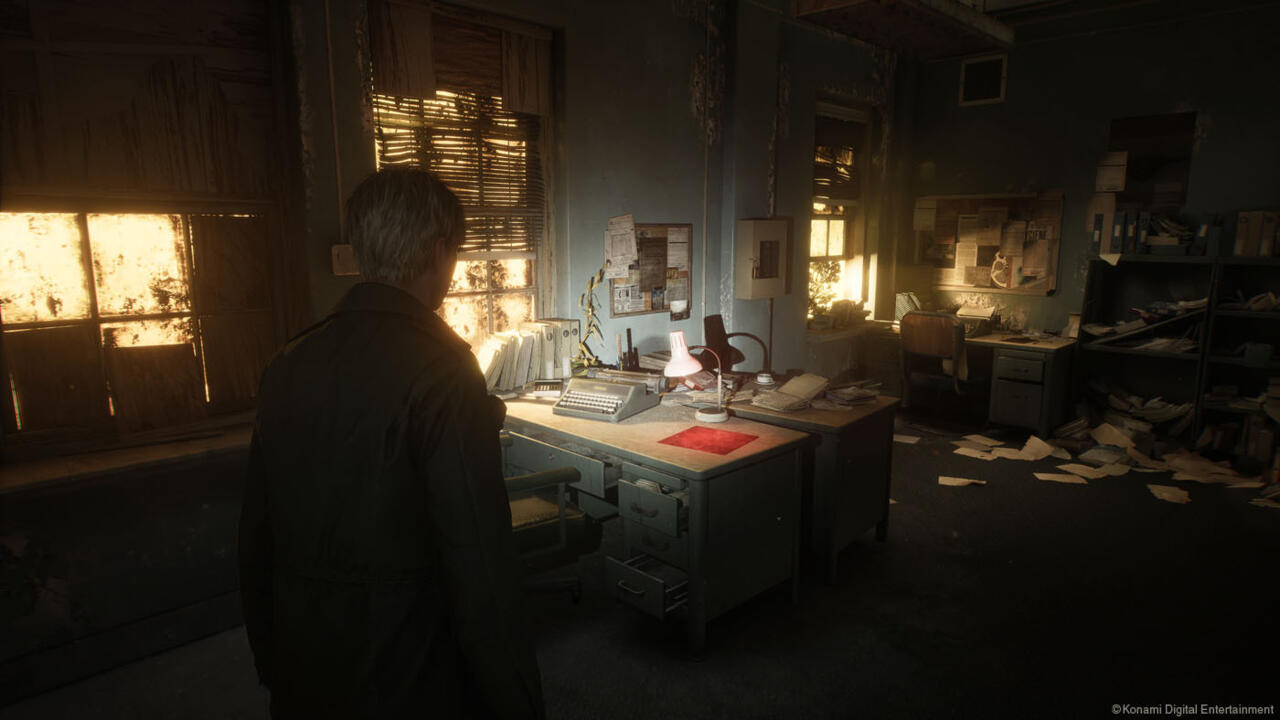
A lot of this expansion is done in the game’s indoor environments, where Bloober Team seems to feel rightly justified in making things more complex and larger in scale. James’s descent toward an unforgettable reveal is both figurative and literal. These places, often fit with bottomless holes, rusted-out mazes, or, in one case, an absurdly long stairwell, are naturally conducive to experimenting with level design in a way the town’s early streets aren’t. They already defy logic, whereas the town’s various roads and buildings, as unreal as they also feel in some ways, still support the facade of a typical town when you’re viewing them on a map in the game.
Indoors or out, those maps are also very helpful in ways that build on what the original offered. James will scribble notes on his maps, with puzzle answer keys eventually going there for ease of use. He’ll also add question marks, which can be read as “go here next” indicators, exclamation marks that signal important items to pick up, and he’ll even circle previously locked doors once you have the means to open them.
This helps the game’s many puzzles feel manageable, especially as some are wholly new. Yet even these additions feel roundabout and confusing in ways both satisfying and familiar to those who frequent the genre, such as needing to find a can opener to open a can of red paint, in which you dip a lightbulb to simulate a red light that exposes a hidden message on a mirror, thereby allowing you to unlock a briefcase stashing a key for a room elsewhere in a massive hotel. It can sometimes be daunting to play games like this for review before crowdsourced answers to what’s stumping you can be found online, but Silent Hill 2’s map system helped me get through sections with the appropriate amount of stumbling so I felt challenged but never stuck long enough to become frustrated.
Sections that may have taken only 30 minutes in the original game now may take two to three hours to complete thanks to how the remake has expanded on certain parts. That isn’t to be taken as unnecessary hour-padding. I rarely felt like any section overstayed its welcome; only one late-game area felt overlong. Every other sequence does a fantastic job of diversifying its enemy encounters, building out new puzzles, and giving players more room to explore and rewards for doing so, like stashes of ammo and health kits, as well as a new collectible I suspect is tied to one of the game’s new endings.
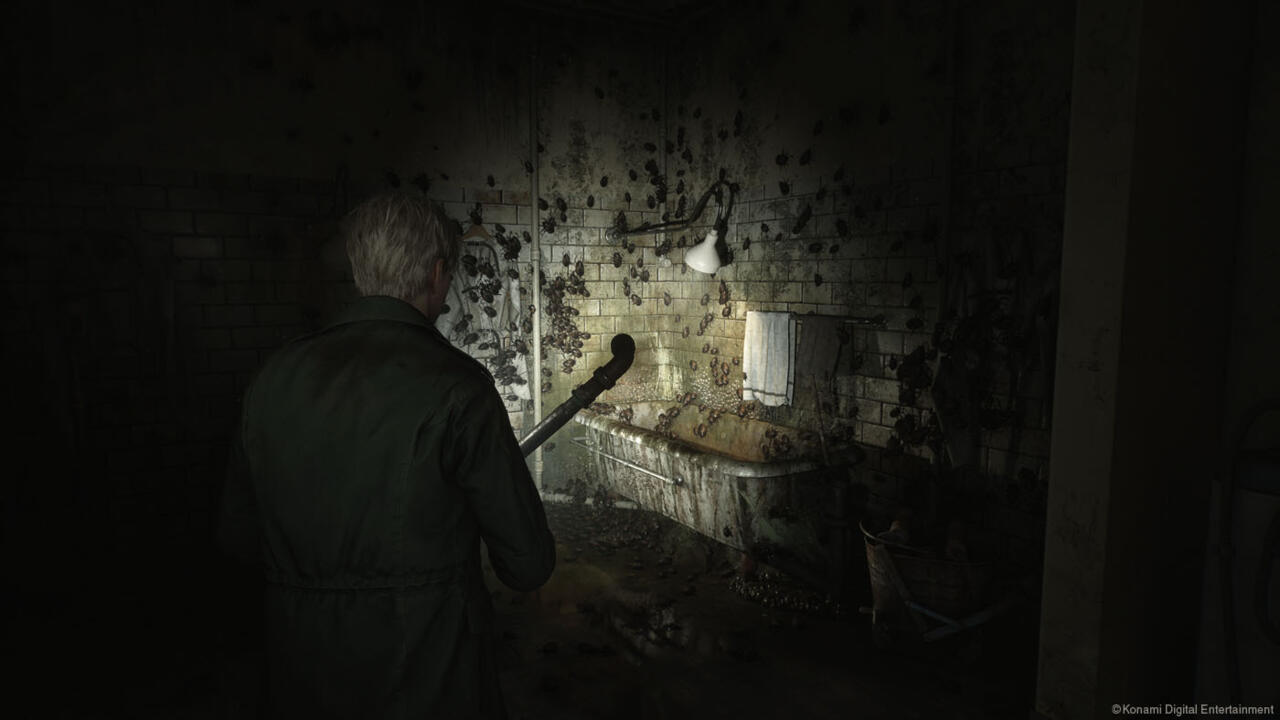
The remake improves on the original game’s combat as well. The 2001 version’s combat was never well-polished, but it did offer a vital quality of unreliability–it was exactly because the game’s shooting and melee attacks were so janky that you were left uneasy in that game’s tight corridors. In the remake, Bloober Team effectively carries forward that important trait, albeit more intentionally than before. The remake is not beholden to early-2000s hardware, so combat is sculpted to fit the narrative as opposed to just being tricky because of technological restraints.
Aiming a gun isn’t easy, as the reticle sways just enough to make lining up a shot achievable without ever letting James feel like a skilled marksman. Some enemies can be spotted in their hiding places before they’ve jumped out at you, but they have a knack for making their move at the exact moment you plan to fire a preemptive shot. A late-game rifle also takes a few seconds for the reticle to center, making a quick shot liable to be off-target, but the alternative of waiting for it to right itself often feels like an eternity as enemies are bearing down on you.
These qualities are very much welcome–Silent Hill 2 mechanically handles like a modern-day shooter, but the aforementioned features add a cumbersome nature to how James moves in a fight. The protagonist isn’t a trained shooter, so he shouldn’t feel like the characters in Call of Duty or Resident Evil. There’s a rewarding sense of skill to Silent Hill 2’s combat, but strategy is geared toward trying to aim a single shot, not time many shots. Its enemy encounters are methodical, deliberate, and intense. A shotgun you find midway through the game is the best of the guns since it can instantly snuff out most targets–which is vital in a game where even just two enemies feels like too many. Thankfully, it isn’t a crutch you can safely lean on, as ammo for it can be scarce, especially if you stick to the main path and don’t explore optional areas.
Melee combat especially shines. Enemies invade James’s space frequently, and his only defenses beyond guns are a sturdy slab of lumber–swapped out later for a metal pipe–and a dodge mechanic that was never there in the 2001 game. This dodge ability pairs well with the enemies’ way of constantly encroaching on you, and the game demands you learn their attack patterns and physical tells in order to stay on your own two feet.
As the game went on, I became increasingly aware of just how tense combat was making me feel. As I’d dodge, fire, dodge, swing, panic-fire, and swing once more, the camera would stay in close, shaking with each hit, making me feel every attack. Downing an enemy isn’t the end either, as they can sometimes get back up. Early on in the game, I found myself wailing on downed enemies in a manner one could only describe as overkill just to ensure they didn’t return to life seconds or even many minutes later. I never retired this method, either. Eventually, when I was satisfied that I’d removed a group of enemies from an area, I commonly observed my breathing return to normal and felt my shoulders release their tension.
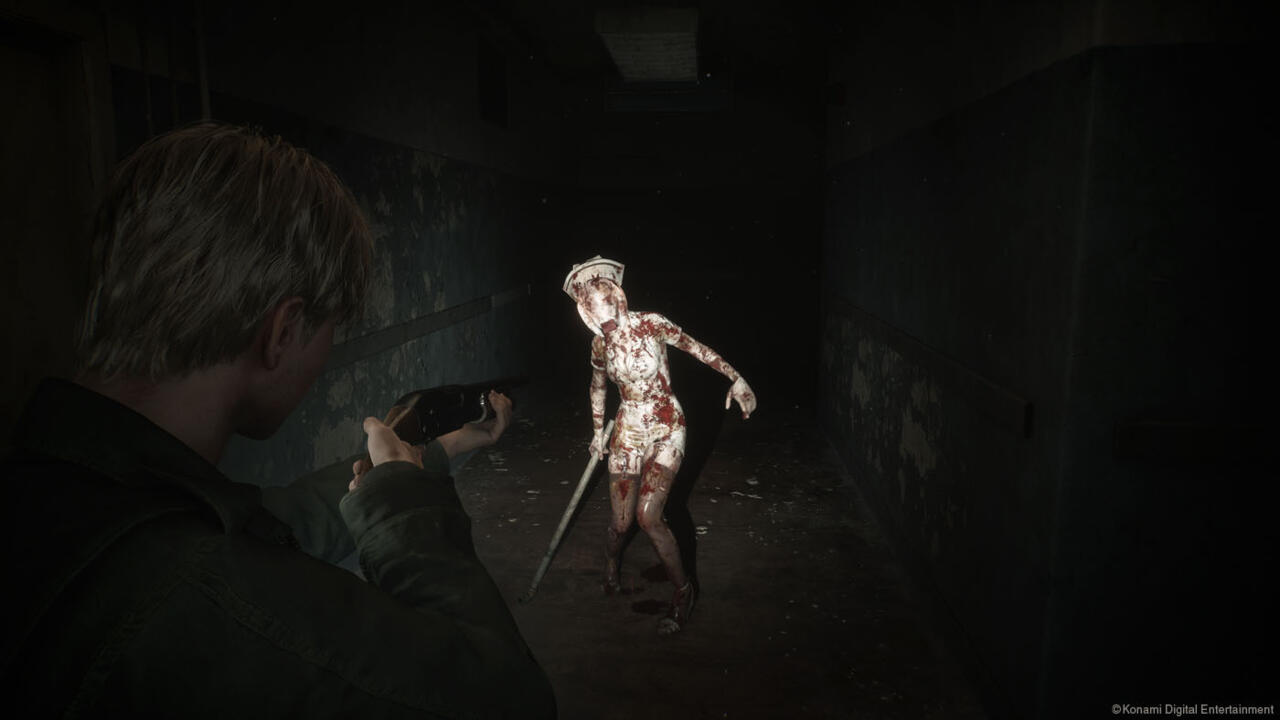
This was never truer than in boss battles, which smartly reject health bars or really any signposting other than giving you space to avoid attacks and leaving you to figure out the rest. It could easily be frustrating to give players a boss battle without direction, but for Silent Hill 2’s bosses, like so much of the game, the unknowable is the point. The solutions are never complex, so squirming in the moment right at the start ends up being another achievement in selling the tension of trying to survive a horrific ordeal.
The only issue I had with the remake’s improved combat mechanics is how abundant ammo–pistol ammo particularly–and health items can become for players who search every corner of an area. I expect a more mainlined player will struggle to make ends meet in James’s inventory supply, but for those who leave no door locked, no car window intact, and no drawer closed, you’ll sometimes wind up with far too much ammo and too many health items.
This wasn’t always the case, but in two lengthy sections of the game, I’d amassed a triple-digit number of pistol bullets and over 20 health kits, which reads like too many resources in probably any survival-horror game, and that was indeed the case here. To its credit, I did eventually exhaust most of that ammo in boss fights soon after, though I also beat the game without ever dying. Still, my 18-hour journey on normal difficulty was incredibly tense throughout, and though I never saw a game-over screen, my numerous close calls were more than enough and perhaps even more satisfying than having to restart a section anyway. On hard-difficulty runs and/or after a future patch that may rebalance inventory and combat, this problem could fade away.
Another of the game’s best feats is how it transposes the original’s grime, grit, and rust into an aesthetic that is high-fidelity but never sanitized. Enemies, like the iconic nurses James encounters in a hospital section, are still a mess of sickly oils and unnervingly featureless faces, their misshapen skin stretched like an ill-fitting bedsheet. The even more mysterious Otherworld James sometimes ends up in is every bit as oppressive and hostile as it was in 2001.
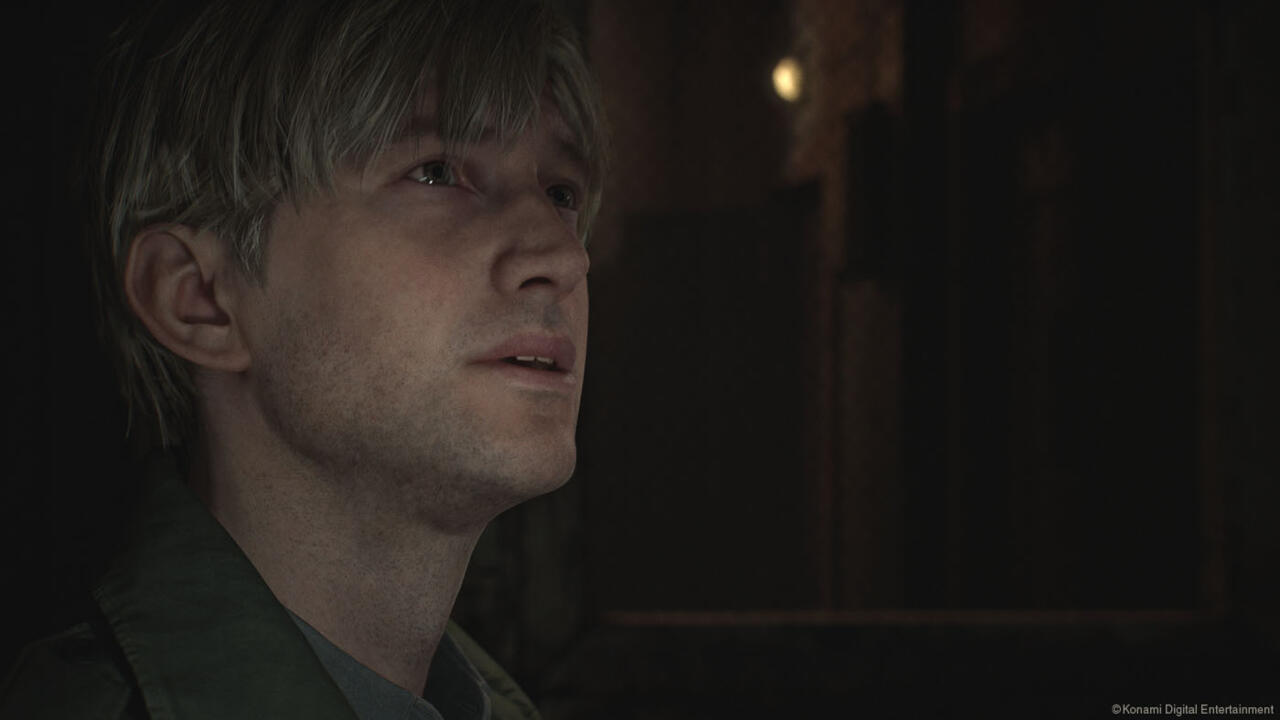
Gallery
The lofi PS2 aesthetic that the game naturally enjoyed back then is today a nostalgic North Star for indie devs who grew up on games like Konami’s classic. Such art direction does allow for a quality that’s hard to define and perhaps pound-for-pound more interesting than a typical triple-A look, but the remake doesn’t lose anything for having better facial animations, stronger voice acting, and a more richly detailed world. These attributes only make the game’s famous and oft-studied final moments affect me greatly despite knowing what happens beforehand. The two games exist side by side for being outstanding in many of the same ways, just for sometimes different reasons.
The original Silent Hill 2 is one of the most beloved, culturally significant, and overall best horror games ever made. It appeared to be the case that trying to recapture the magic of that game was to misjudge how impactful its time and place were, and how its limitations helped shape it for the better. Any studio advancing on such a project should’ve had a Sisyphean task ahead of them, forever chasing its essence like a moth with a hole in your net. However, by staying true to the original game in extremely important ways and taking calculated risks born from an understanding of the source material, all while being supported further by some of the game’s original brain trust, Bloober Team has done what was reasonably considered near-impossible. The remake of Silent Hill 2 is a restless dream come true.
